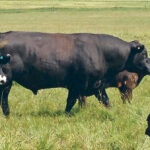
Stories by Heather Smith Thomas

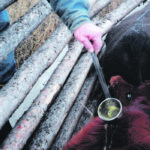
Do farm’s lice bite or suck?
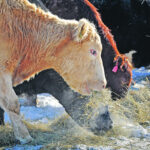
Good lice control depends on type, timing
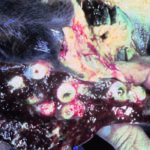
Cattle, deer liver flukes cause rising problems
Deer liver flukes in particular are becoming a more common problem in cattle herds, and treatments can prove tricky for producers
Liver flukes start their life cycle in tiny freshwater snails but end up in the livers of grazing animals, where they mature and pass their eggs. Feces containing fluke eggs must land in water for transmission to snails. If the animals’ feces lands on dry ground, the eggs die. Cattle generally get two types of […] Read more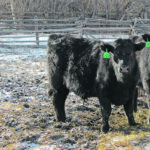
Well-fed bulls make good breeders
Proper nutrition for young animals has been found to be vital for breeding success, but it should start before weaning
Years of research have shown that bulls with larger testicles tend to have more sperm and can settle more cows than bulls with small testicles. Also, well-fed bulls generally reach puberty quicker than undernourished bulls. Dr. John Kastelic, a veterinarian and professor in cattle reproductive health at the University of Calgary, has done a lot […] Read more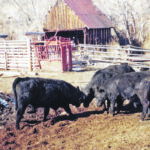
Breeding season common time for bull injuries
A penile hematoma, also known as broken penis, is an injury that most often occurs in bulls that breed cows in pasture
Bulls occasionally get injured when fighting or breeding. Jennifer Pearson, assistant professor of production animal health at the University of Calgary, said most injuries happen during breeding season. “These injuries fall into two categories: reproductive injuries and musculoskeletal injuries, usually feet and legs. “A common reproductive injury is a penile hematoma, often called broken penis. […] Read more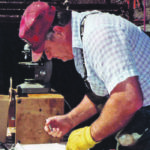
Bull soundness exam vital to breeding success
A physical examination includes scrotal circumference measurement, semen quality test and checking sperm appearance
Semen quality, conformation, soundness and a desire to breed cows all play a role in bull fertility and breeding ability. A breeding soundness examination can ensure all is well before breeding season begins. Such exams include physical and reproductive tract soundness, scrotal circumference, percentage of normal sperm cells and sperm motility. Dr. Colin Palmer of […] Read more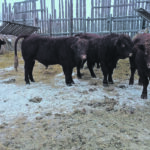
Scrotal frostbite may have lasting impact
Any injury to the testicles that damages stored sperm may put a bull out of action until it heals and produces new sperm
Scrotal frostbite in bulls is a risk to fertility and ranch profitability. Cold weather and wind chill can damage bulls’ testicles and deteriorate semen but it is hard to gauge without a test. Dr. Colin Palmer, associate director at the Livestock and Forage Centre of Excellence at the University of Saskatchewan, says scrotal frostbite commonly […] Read more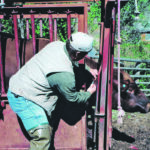
Vaccine reactions rare but deadly
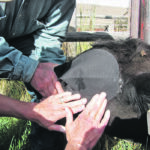
Pinkeye requires swift treatment to prevent outbreaks
Prevention can be difficult because the disease is spread by flies and vaccines usually work on only one strain
Cattle pinkeye, more scientifically known as infectious bovine keratoconjunctivitis, is an expensive illness. It costs cattle producers thousands of dollars annually due to poor weight gains in affected animals, reduced milk production, cost of drugs and labour to treat infections and lower prices at sale time for animals with eye damage or blindness. Stockmen generally […] Read more


